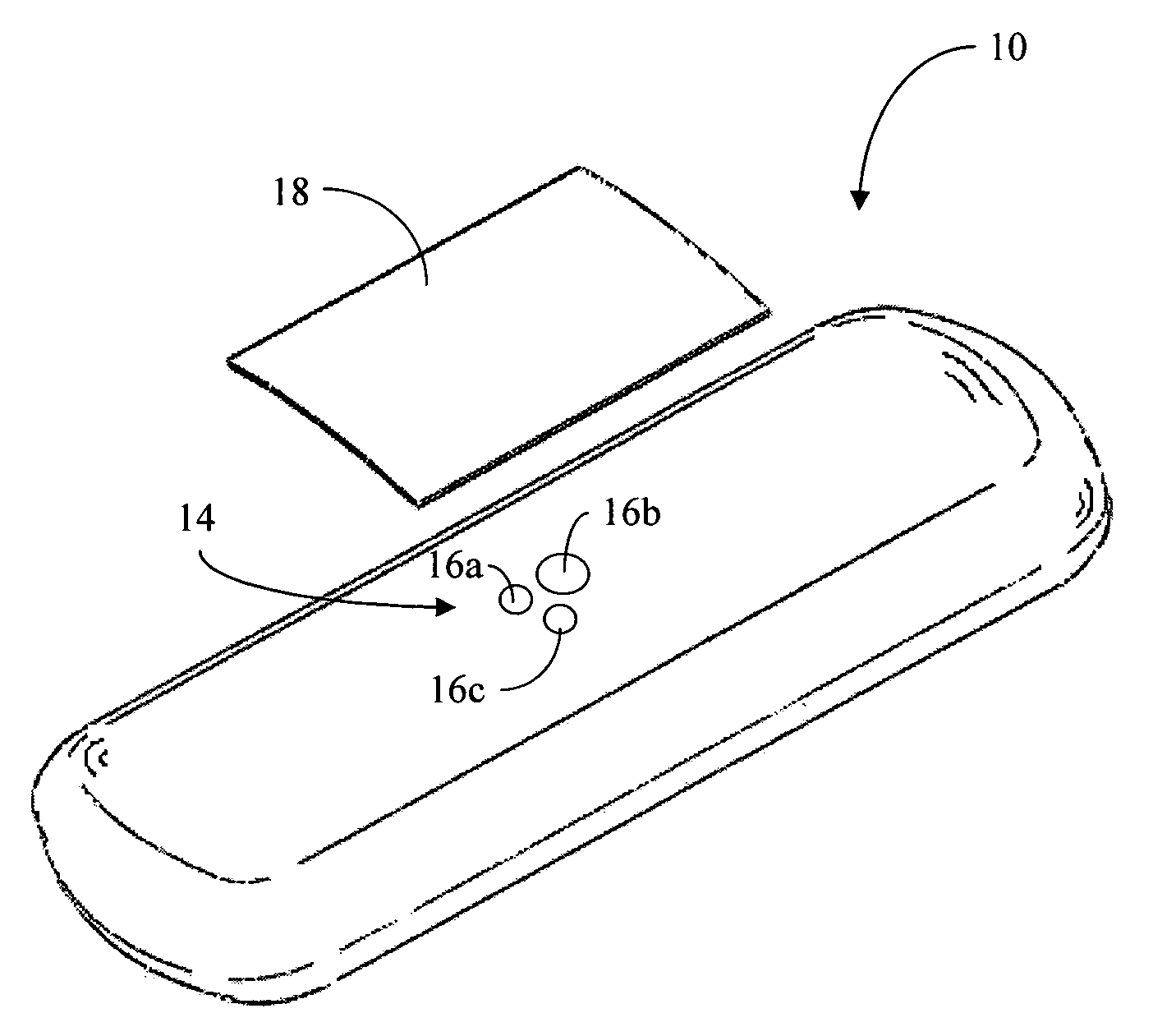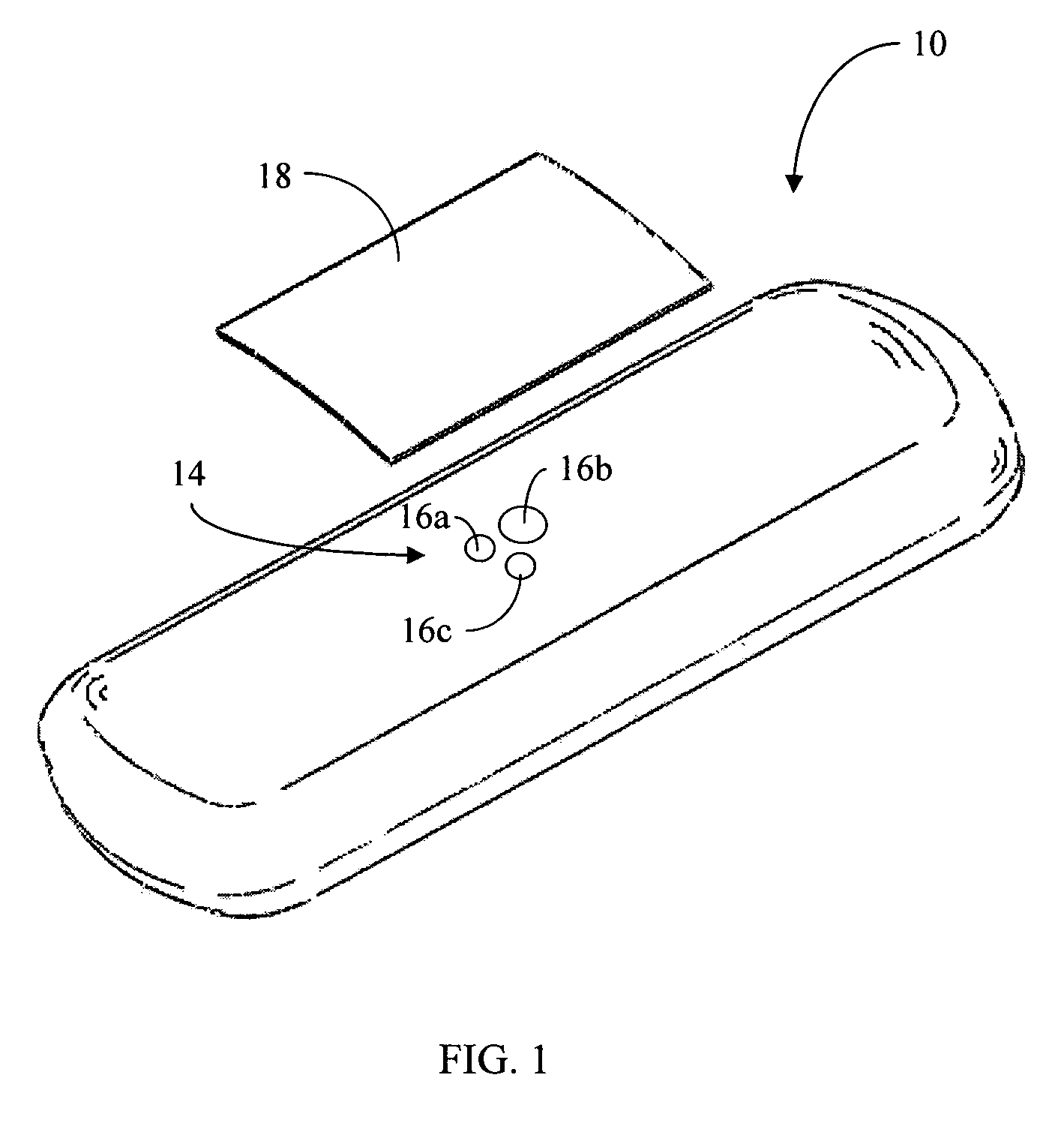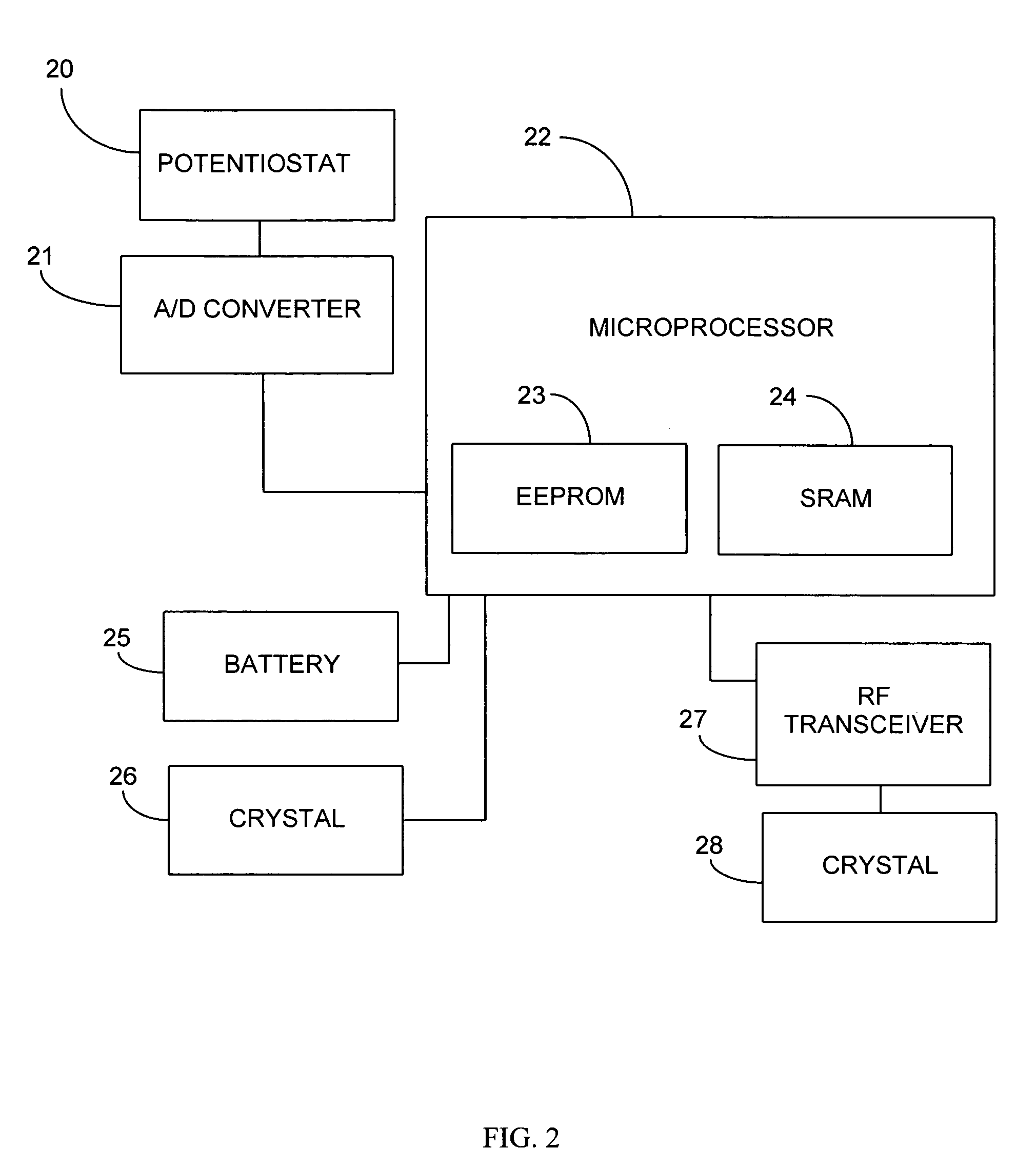Electrode systems for electrochemical sensors
a technology of electrochemical sensors and electrodes, applied in the field of electrochemical sensor electrodes, can solve the problems of diabetes, diabetes will likely be affected, and the implantable glucose sensor suffers from complications within the body, and the implantable glucose sensor is likely to be affected
- Summary
- Abstract
- Description
- Claims
- Application Information
AI Technical Summary
Benefits of technology
Problems solved by technology
Method used
Image
Examples
first embodiment
[0008]Accordingly, in a first embodiment, an electrochemical sensor for determining a presence or a concentration of an analyte in a fluid is provided, the sensor comprising a membrane system comprising an enzyme, wherein the enzyme reacts with the analyte; an electroactive surface comprising a working electrode, the working electrode comprising a conductive material and configured to measure a product of the reaction of the enzyme with the analyte; and an auxiliary electrode comprising a conductive material and configured to generate oxygen, wherein the auxiliary electrode is situated such that the oxygen generated diffuses to the enzyme or to the electroactive surface.
[0009]In an aspect of the first embodiment, the auxiliary electrode comprises a conductive material selected from the group consisting of a conductive metal, a conductive polymer, and a blend of a conductive metal and a conductive polymer.
[0010]In an aspect of the first embodiment, the auxiliary electrode comprises a...
second embodiment
[0021]In a second embodiment, an electrochemical sensor for determining a presence or a concentration of an analyte in a fluid is provided, the sensor comprising a membrane system comprising an enzyme, wherein the enzyme reacts with the analyte; an electroactive surface comprising a working electrode, the working electrode comprising a conductive material and configured to measure a product of the reaction of the enzyme with the analyte; and an auxiliary electrode comprising a conductive material and configured to modify an electrochemical interferant such that the electrochemical interferent is rendered substantially electrochemically non-reactive at the working electrode.
[0022]In an aspect of the second embodiment, the auxiliary electrode comprises a conductive material selected from the group consisting of a conductive metal, a conductive polymer, and a blend of a conductive metal and a conductive polymer.
[0023]In an aspect of the second embodiment, the auxiliary electrode compri...
third embodiment
[0035]In a third embodiment, an electrochemical sensor is provided comprising an electroactive surface configured to measure an analyte; and an auxiliary interferant-modifying electrode configured to modify an electrochemical interferant such that the electrochemical interferant is rendered substantially non-reactive at the electroactive surface.
[0036]In an aspect of the third embodiment, the auxiliary interferant-modifying electrode comprises a conductive material selected from the group consisting of a conductive metal, a conductive polymer, and a blend of a conductive metal and a conductive polymer.
[0037]In an aspect of the third embodiment, the auxiliary interferant-modifying electrode comprises a form selected from the group consisting of a mesh, a grid, and a plurality of spaced wires.
[0038]In an aspect of the third embodiment, the auxiliary interferant-modifying electrode comprises a polymer, wherein the polymer is situated on a surface of the auxiliary interferant-modifying ...
PUM
| Property | Measurement | Unit |
|---|---|---|
| bias voltage | aaaaa | aaaaa |
| voltage | aaaaa | aaaaa |
| voltage | aaaaa | aaaaa |
Abstract
Description
Claims
Application Information
 Login to View More
Login to View More - R&D
- Intellectual Property
- Life Sciences
- Materials
- Tech Scout
- Unparalleled Data Quality
- Higher Quality Content
- 60% Fewer Hallucinations
Browse by: Latest US Patents, China's latest patents, Technical Efficacy Thesaurus, Application Domain, Technology Topic, Popular Technical Reports.
© 2025 PatSnap. All rights reserved.Legal|Privacy policy|Modern Slavery Act Transparency Statement|Sitemap|About US| Contact US: help@patsnap.com



